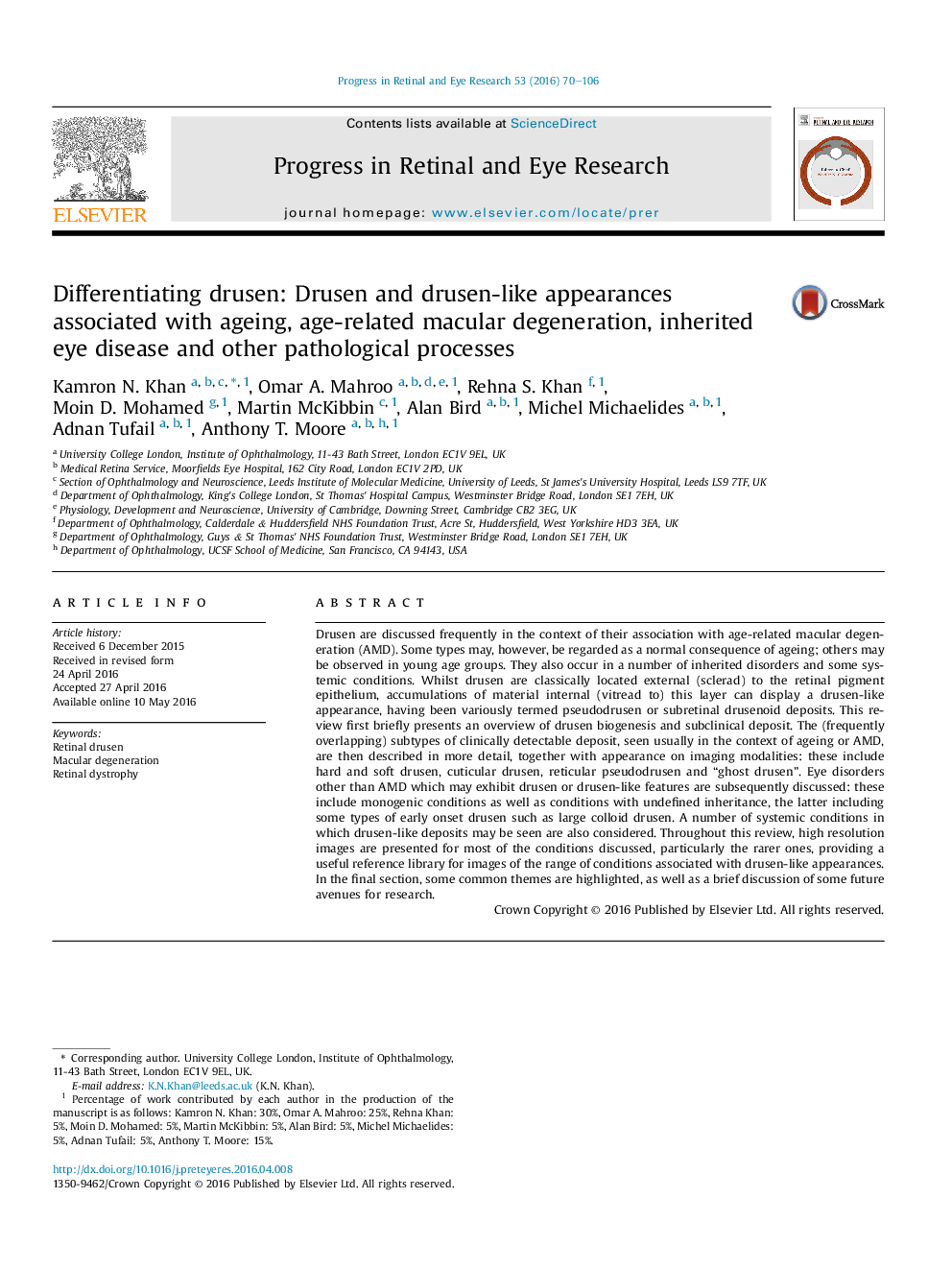| Article ID | Journal | Published Year | Pages | File Type |
|---|---|---|---|---|
| 4031891 | Progress in Retinal and Eye Research | 2016 | 37 Pages |
•Besides age-related macular degeneration, drusen and drusen-like deposits can occur in normal ageing, and in young age groups; they can also be associated with inherited conditions and with systemic disorders.•Multimodal imaging can afford a degree of differentiation.•White dots, drusen or subretinal drusenoid deposits may be seen in a number of inherited eye disorders, including visual cycle disorders as well as mutations in the following genes: EFEMP1, PLA2G5, TIMP3, C1QTNF5, IMPG1, IMPG2, PRPH2, CDHR1.•Common themes emerging include complement dysregulation and alterations in the transport of retinoid (either by visual cycle disruption or Bruch membrane thickening), yielding insight into pathogenetic mechanisms as well as potential therapeutic targets.
Drusen are discussed frequently in the context of their association with age-related macular degeneration (AMD). Some types may, however, be regarded as a normal consequence of ageing; others may be observed in young age groups. They also occur in a number of inherited disorders and some systemic conditions. Whilst drusen are classically located external (sclerad) to the retinal pigment epithelium, accumulations of material internal (vitread to) this layer can display a drusen-like appearance, having been variously termed pseudodrusen or subretinal drusenoid deposits. This review first briefly presents an overview of drusen biogenesis and subclinical deposit. The (frequently overlapping) subtypes of clinically detectable deposit, seen usually in the context of ageing or AMD, are then described in more detail, together with appearance on imaging modalities: these include hard and soft drusen, cuticular drusen, reticular pseudodrusen and “ghost drusen”. Eye disorders other than AMD which may exhibit drusen or drusen-like features are subsequently discussed: these include monogenic conditions as well as conditions with undefined inheritance, the latter including some types of early onset drusen such as large colloid drusen. A number of systemic conditions in which drusen-like deposits may be seen are also considered. Throughout this review, high resolution images are presented for most of the conditions discussed, particularly the rarer ones, providing a useful reference library for images of the range of conditions associated with drusen-like appearances. In the final section, some common themes are highlighted, as well as a brief discussion of some future avenues for research.
